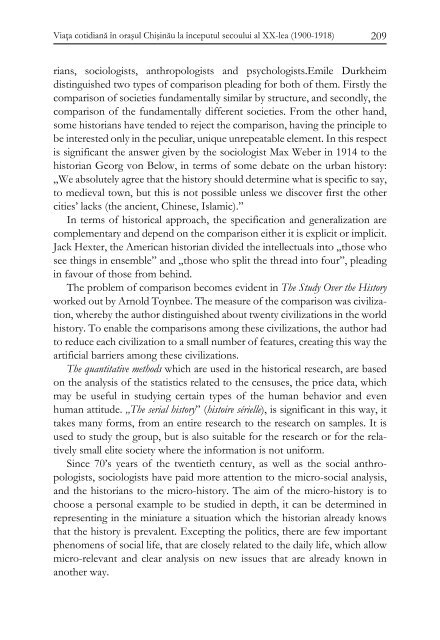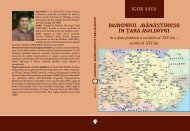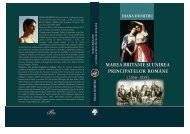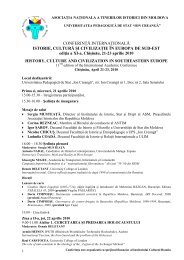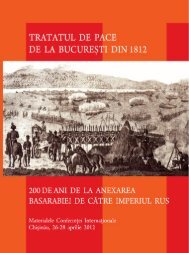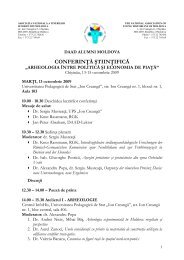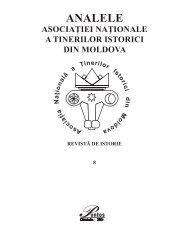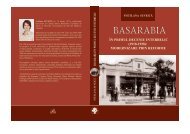LUCIA SAVA, Viaţa cotidiană în oraşul Chişinău la - Asociatia ...
LUCIA SAVA, Viaţa cotidiană în oraşul Chişinău la - Asociatia ...
LUCIA SAVA, Viaţa cotidiană în oraşul Chişinău la - Asociatia ...
Create successful ePaper yourself
Turn your PDF publications into a flip-book with our unique Google optimized e-Paper software.
<strong>Viaţa</strong> <strong>cotidiană</strong> <strong>în</strong> <strong>oraşul</strong> <strong>Chişinău</strong> <strong>la</strong> <strong>în</strong>ceputul secoului al XX-lea (1900-1918)<br />
209<br />
rians, sociologists, anthropologists and psychologists.Emile Durkheim<br />
distinguished two types of comparison pleading for both of them. Firstly the<br />
comparison of societies fundamentally simi<strong>la</strong>r by structure, and secondly, the<br />
comparison of the fundamentally different societies. From the other hand,<br />
some historians have tended to reject the comparison, having the principle to<br />
be interested only in the peculiar, unique unrepeatable element. In this respect<br />
is significant the answer given by the sociologist Max Weber in 1914 to the<br />
historian Georg von Below, in terms of some debate on the urban history:<br />
„We absolutely agree that the history should determine what is specific to say,<br />
to medieval town, but this is not possible unless we discover first the other<br />
cities’ <strong>la</strong>cks (the ancient, Chinese, Is<strong>la</strong>mic).”<br />
In terms of historical approach, the specification and generalization are<br />
complementary and depend on the comparison either it is explicit or implicit.<br />
Jack Hexter, the American historian divided the intellectuals into „those who<br />
see things in ensemble” and „those who split the thread into four”, pleading<br />
in favour of those from behind.<br />
The problem of comparison becomes evident in The Study Over the History<br />
worked out by Arnold Toynbee. The measure of the comparison was civilization,<br />
whereby the author distinguished about twenty civilizations in the world<br />
history. To enable the comparisons among these civilizations, the author had<br />
to reduce each civilization to a small number of features, creating this way the<br />
artificial barriers among these civilizations.<br />
The quantitative methods which are used in the historical research, are based<br />
on the analysis of the statistics re<strong>la</strong>ted to the censuses, the price data, which<br />
may be useful in studying certain types of the human behavior and even<br />
human attitude. „The serial history” (histoire sérielle), is significant in this way, it<br />
takes many forms, from an entire research to the research on samples. It is<br />
used to study the group, but is also suitable for the research or for the re<strong>la</strong>tively<br />
small elite society where the information is not uniform.<br />
Since 70’s years of the twentieth century, as well as the social anthropologists,<br />
sociologists have paid more attention to the micro-social analysis,<br />
and the historians to the micro-history. The aim of the micro-history is to<br />
choose a personal example to be studied in depth, it can be determined in<br />
representing in the miniature a situation which the historian already knows<br />
that the history is prevalent. Excepting the politics, there are few important<br />
phenomens of social life, that are closely re<strong>la</strong>ted to the daily life, which allow<br />
micro-relevant and clear analysis on new issues that are already known in<br />
another way.


